Replacing the original Commodore 64 power supply may be the single most valuable step to prolong the life of the old hardware! The main issue with the original C64 power supplies is the 5V line. When it eventually fails (and it will!), from e.g. a shorted internal 5V regulator, it will put excessive voltage into the computer and damages delicate chips such as the RAM very quickly. Even if the power supply is measured before being used, it can still fail after it warms up hereby making it kill the C64 silently… The best protection is therefore to either add a protection circuit to the original power supply or simply get a modern day power supply with the safety circuit build-in. I still use an original beige C64 power supply with a Computer Saver by Ray Carlsen (link) which functions by quickly cutting off the 5V supply line to the computer if the voltage exceeds about 5.4V. However, being able to purchase a brand new power supply for my old Commodore 64s with a build-in safety circuit would be the perfect solution to the dreaded problem.
In this context, Electroware from Poland (link) offers brand new power supplies for the Commodore home computers including the C64, the C128, the 1541-II and the Amiga. I bought the version for the Commodore 64 for 40 Euros (about 46 USD) + shipping from Poland. It is called the C64 PSU and the power supply has stabilized 5VDC (2A) and 9VAC (1.11A) outputs using heavy-duty transformer units. It also has an over current/over voltage protection circuit and all parts are fully isolated. The device has a round ON/OFF switch on the front, a status LED and a long output cable of 1.9m. The little black gem looks like this and should make the use of my Ray Carlsen Computer Saver cable unnecessary…
The Electroware C64 PSU
The C64 PSU from Eletroware comes in a small cardboard box with a small booklet with instructions for proper use. The front of the device holds a red ON/OFF switch. When the device is turned on, a green LED lights up inside the case which can bee seen through the venting holes on the side of the unit. I would personally have liked the status LED to be integrated into the power switch, but maybe that is just me… Nevertheless, everything looks nice and neat and seems to be well build.
The internals of the PSU consists of a small PCB, two transformers, a power LED and an over voltage protection circuit.
Testing the Electroware PSU
There are numerous ways to test a power supply. As I do not own special equipment to measure e.g. ripple noise of the unit I therefore used my multimeter for the tests. For comparison, I also tested several original Commodore 64 power supplies as well as a state-of-the-art power supply from Ray Carlsen. I used an Assy 250469 short board for all my tests. The machine had no peripherals attached (e.g. 1541U-II, SD2IEC, tape deck etc.) so it was as basic as it could be.
The Original and the Ray Carlsen Power Supplies
I measured a total of five original power supplies (three beige and two brown) as well as Ray’s power supply. All power supplies were attached to the C64 and turned on (loaded) for at least 15 minutes before I did the measurements to ensure that they were warmed up. As expected, I consistently measured values of 4.99-5.03VDC from the 5V lines across all orignal C64 power supplies using, among others, pin 14 of the chip U22 7406 IC on the motherboard. The 9V line was measured directly at the power plug and yielded values of 10.19-10.63VAC across all original power supplies.
Ray Carlsen’s power supply gave me values of 4.98VDC and 9.42VAC as shown below. His power supply was the only one with values relatively close to the 9VAC.
The Electroware C64 PSU
According to Electroware, the over voltage safety circuit should be simple, fast and reliable. It is based on a crowbar protection circuit and a TVS diode. The circuit is set to trigger around 5.2-5.3V. With the PTC fuse, filter and cable voltage drop, no voltages higher than about 5.1V should ever reach the Commodore 64 main board. Sounds pretty good to me! I don’t want to worry about frying anything which is the main reason for buying a new reliable power supply in the first place! It was now time to see how the new Electroware C64 PSU performed in comparison to the +30 year old power supplies.
The 5VDC line (up to 2A) uses a Mean Well IRM-10-5 transformer with a ripple noise of 200mVp while the 9VAC line (up to 1.11A) uses a Hahn BV EI 481 1291 transformer with a no-load voltage of 11.50V (10VA) which should provide more than enough power to most users . The only device that uses the 9VAC line is the cassette motor transistor amplifier and on Revision B motherboards (Assy 250425, 250441 & 250466) it is also used for the RF modulator.
Measurering the 5V line of the C64 PSU from Electroware consistently gave me values below 4.73V… The value of the power supply therefore seems a little low in comparison to the original ditto. Usually, when the 5V line is low (<4.8V) it is caused by either a bad power supply or a chip(s) demanding a too high current. As I use the machine for various tests (all MechBoard64’s are tested in this machine as part of the QA procedure), I’m sure it works flawlessly. I have even removed the SID chip and the MechBoard64 as it has a little ShiftLock circuit that is powered by the 5V line. This did not change anything. Thus, I suspect the low value to somehow be caused by the power supply itself and not the short board – more on that below.
The 9V line was measured directly at the power plug and yielded values of 11.50VAC which is exactly what the specification of the Hahn BV EI 481 1291 transformer states when not being loaded. In my opinion I think this value is a little to the high side, but as I never use e.g. a cassette deck, this is not really a turning point for me.
Communication with Electroware’s Chief Engineer
As I was concerned that my PSU was faulty (especially the low 5V values concerned me quite a bit) I contacted the nice people at Electroware to have them comment on my findings. Their chief engineer made quite an effort to answer all my questions. Below is a resume of his lengthy explanation in more general terms:
The 5V line of the C64 PSU outputs 5.05VDC at the transformer. The voltage drop I measured is therefore caused by the long output cable (1.90m), the 5VDC in-line output filter, PTC fuse and the over voltage protection circuit. The normal output voltage of the C64 PSU on a regular C64 should therefore be around 4.85V. Apparently, I’m the second or third person pointing towards the 5V voltage being too low… Good news for me and the other two concernd users 🙂 is that the voltage of the 5V line may be updated in a future release of the power supply. According to the developer, the increase in voltage can simply be achieved by using a thicker/shorter output cable, different secondary fuse type with a lower resistance and perhaps a different filter. However, this does not change the output voltage I get from my current unit… Nevertheless, the good news is that Electroware is considering releasing a ‘Pro’ model with an even bigger power supply dedicated to heavier machines (carrying modern peripherals like the 1541Ultimate II+) with more power and an adjustable voltage output so that the users may set their own voltages to match the 5VDC exactly on the C64 main board. Well, Electroware count me in whenever that is relased 🙂
Electroware’s chief engineer commented on my concerns regarding the low 5VDC values (<4.73V) I measured and explained that Commodore 64 ICs have a +/-10% (or more) supply voltage tolerance so they should work fine with voltages in the 4.5-5.5V range in most cases. He elaborated that the 10% tolerance is actually quite wide so Electroware’s PSU have tolerances of +/-5% which would be values in the 4.75-5.25V range. By aiming at the lower values of the range, the risk of frying delicate chips has been reduced even further. Nevertheless, the relatively low values I got when using the C64 PSU in a very basic system concerns me in relation to stabillity issues. I know by experience that if just one chip is not functioning right in a C64, weird faults start to surface. If such a case should actually occur, I might end up exchanging precious chips instead of just replacing the PSU as it may be very hard to tell what is actually causing the issue. I know I’m most likely just being over-concerned and seing things that are more theroretical as I have no practical experience to back it up. To Electroware’s defense, I have not in any way experienced any instability issues while using their power supply! So in the end, it may just be me that think too much and imagine things that are not really there 🙁
Regarding the high voltages of the unregulated 9VAC line that in the no-load state is around 11VAC, will only drop to 9VAC when the power supply is fully loaded (10VA). As devices using the 9VAC line only draws a few hundred milliamps, there is therefore no real way to test this properly on real hardware. I’m therefore no personally particularly concerved with the 9VAC line of the C64 PSU Electroware.
Final Thoughts
So what do I think of the C64 PSU from Electroware? Well, it’s well engineered, it’s cheap compared to the alternatives (e.g. Ray Carlsen’s power supply), it’s build from solid parts, it runs cold, it has enough power for most users and the over voltage protection is set sufficiently low to save the internals of any Commodore 64. The developers seem to really know their hardware and have made quite an effort to balance cost, over voltage protection and power in a small unit. I therefore truly believe, that the C64 PSU will work flawlessly in most Commodore 64 systems without too many power hungry peripherals. This is also what Electroware reassured me of after selling hundreds of units without complaints.
Nevertheless, even with a pre-set value of 4.85V (which I find kinda low), my measurements of 4.73V in a completely un-loaded system without any external parts attached (e.g. 1541U-II, SID chip or even a MechBoard64) is simply too low for my personal taste. I’m truly afraid that it will cause instability issues whenever I start adding power hungry hardware (which I certainly do 🙂 ) that draw more power from the C64 PSU. Until Electroware relases their ‘Pro’ model (which I believe is a must-have item) with the adjustable voltage option, I’m therefore back to using my good old original beige Commodore 64 power supply with Ray Carlsen’s Computer Saver cable attached. I really don’t like to take any chances in regard to stability issues, even if they are just theoretically, when I start adding other parts to my machines (which I really enjoy…).
© breadbox64.com 2018

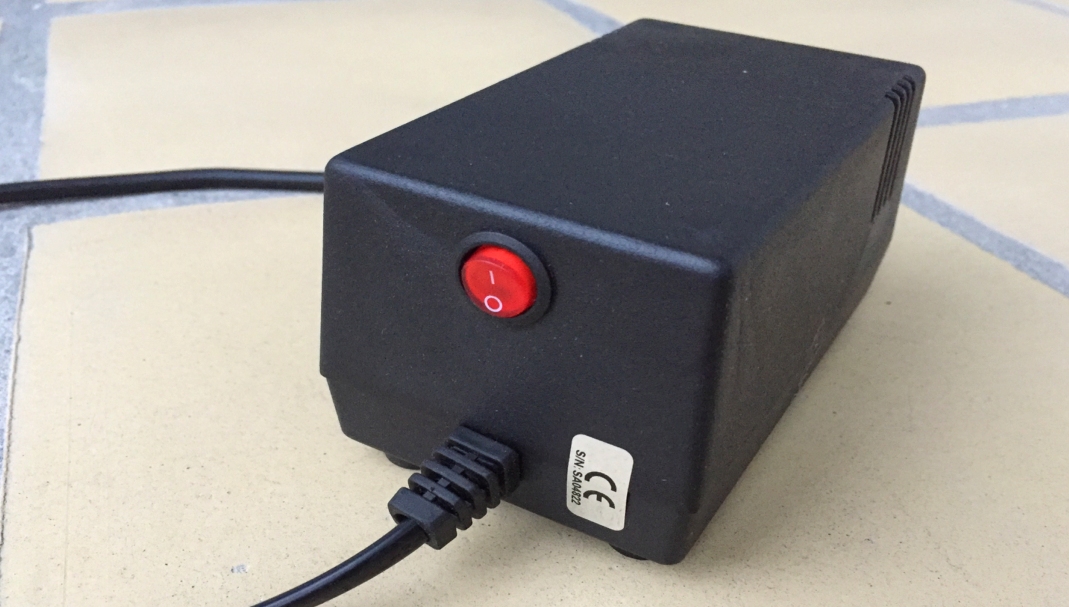
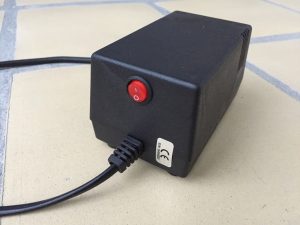
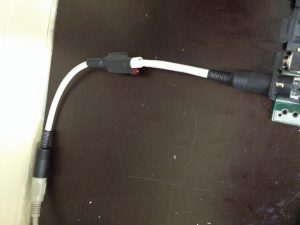
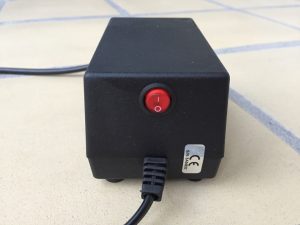
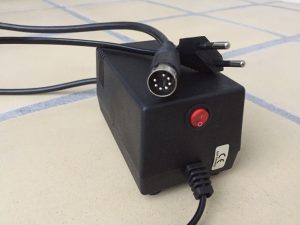
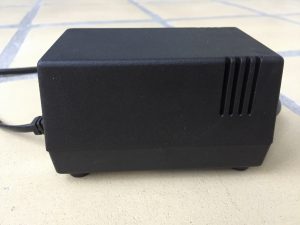
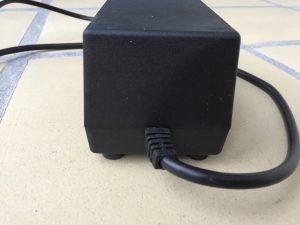
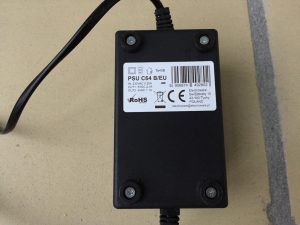

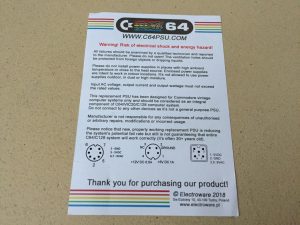
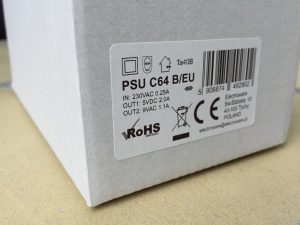
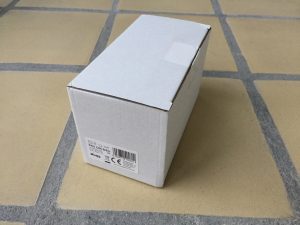
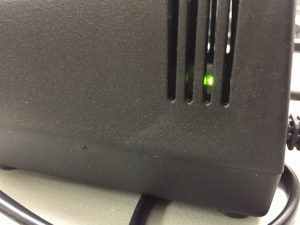
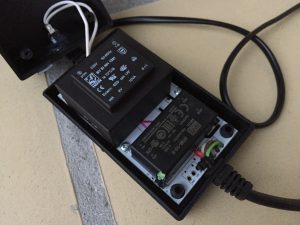
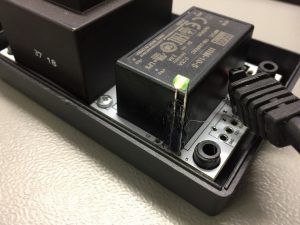
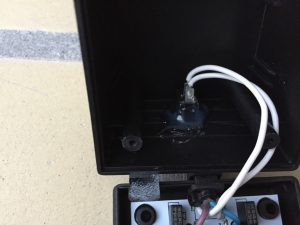
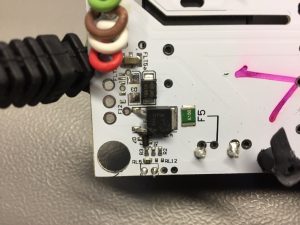
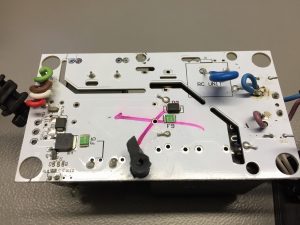
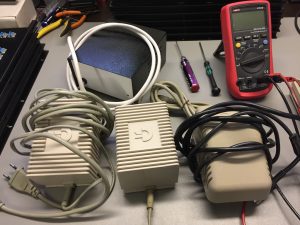
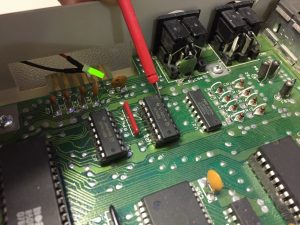
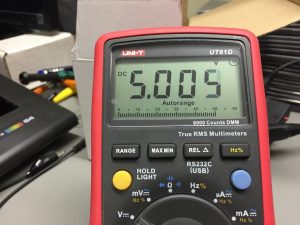
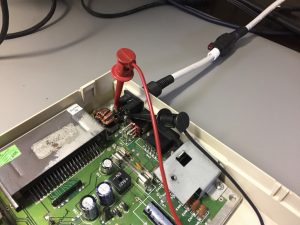
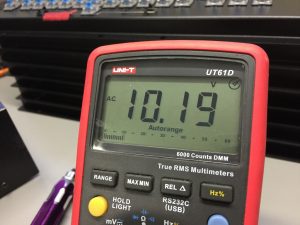
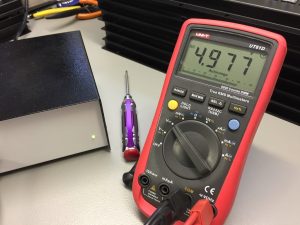
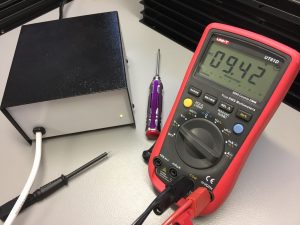
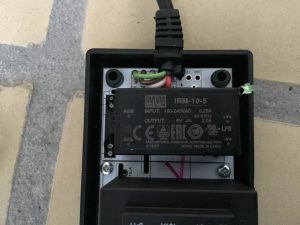
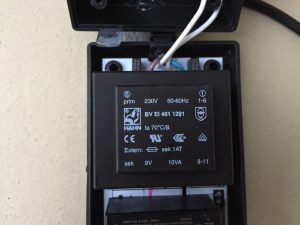
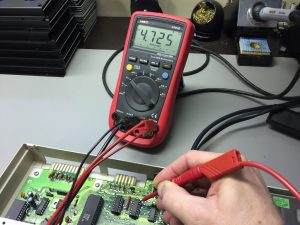
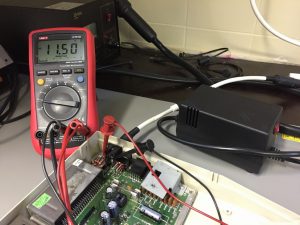
Nice article, I have been using one of these for a couple of months now. I have used it with both a 1541II+ and a Pi1541 and had no issues. Not measured the 5v line as I presumed it would be spot on. I am gonna continue using it on my test rig and will be sure to let you know if i see anything out of the ordinary. Gotta be better than the original black brick of death PSU 🙂
My C64 started acting up recently, which I recognized instantly as a failing PSU. So powered off! I just ordered one of the Electroware units since it seems like it’s pretty well built. On the other hand it just occurred to me I could have done like Ray Carlsen, got a 9V and 5V couple of wall-warts and mounted them in the old PSU housing and wired them to the original plug, and have a functioning system for basically free. OH WELL.
These products from electroware have mixed opinions on the internet. You should read (FB groups) what issues face users before deciding if it is actually worth buying one. I would certainly not. Photos of internals in combined c64 and 1541-II PSU or PCBs where they didn’t solder all elements properly. They don’t have quality control because end consumers revealed that after opening factory sealed supply was broken.
I agree with Ricky. Be wary of buying these. Mine stopped providing enough power to support even my C64 without any peripherals only weeks after it was delivered. A replacement PSU should be more robust. These really aren’t…
“ShakyPSU” Why didn’t you simply contact us for return/replace the unit? Are you really using our PSU or just disseminating the hate around (with Ricky)? Please check our eBay feedback – how come it’s so different than these two posts above? eBay feedback is gathered from real customers it can’t be faked, just reconsider.
Great article MtnBuffalo! Thanks for extremely constructive feedback, it would be surely used to improve the PSU in future.
Have we heard from Electroware if they’ve updated the design to bump up that 5V rail yet? It seems like that would be something they’d want to work on after seeing this review. Glad to see that Andrzej from Electroware has been commenting here, looking forward to the possibility of hearing from them about this.
Thanks!
Hi Bk, Electroware is updating the 5V rail 🙂 You can find more information on his Facebook page here from March 2019 (link).
Hello!
As I’m continuously asked by users, I just wanted to confirm that the 5VDC rail has been tuned to the C64C (PCB 252311 Rev B) “idle state” chosen as a reference load (I think it’s a reasonable choice as it seems to be the most common board). The PSU has been tuned to give exactly 5VDC on C64C main board (measured directly on U22 pin 14). It may vary a bit for other boards as the load regulation is not extravagantly precise (but notice that I have to fit the reasonable budget on basic PSU model price as I want to keep it relatively cheap to make it accessible for all). Trim preset has already been implemented in March 2019 for all C64 PSU models available from Electroware.
More news coming soon for both C64 and Amiga PSU. Take care (of your C= gear) 😉
The cassette port does not use 9VAC. It uses “UNREG +9V” which is the output of the 9VAC rectifier. The transistor + zener circuit at the cassette port acts like an el-cheapo linear regulator.
Did you measure the PSU ripple? By datasheet the Meanwell module has up to 200mV ripple. At least the CIA chip is known to fail early with too large ripple. I ditch original PSUs with that high ripple.
Thanks for the clarification of the cassette port. Sorry, I don’t have eqiupment suitable for measuring the amount of ripple in the PSU.
I got mine on late April, directly from the site. It has the update rail, as I hooked a multimeter to the breakout cable I use to power the SD2IEC (mine draws juice from the user port) getting a steady 5.2V / 5.3V. My unit works with SD2IEC and Tapuino Mini always on, and never went out of juice again 🙂
Hello All, To put to rest some of the Misconceptions here: when testing a power supply, there is required equipment that one must have. Like a dummy load box, an oscilloscope (it doesn’t matter how fast. 25 MHz on up works fine), a good Volt/Amp Meter (either digital or analog as long as it can read true RMS voltages), Case in point many do not read true RMS (China Clones!) With all that being said. Here’s why… You need to load the power supply up to 150% to see any type of problem if there is one to be found. You also need to read the voltages accurately under these conditions, and you need to have a minimum acceptable voltage and maximum! 4.85 5.5 volts. Nope, too wide of a tolerance. 4.95 to 5.1 volts. No more or less! 9 volts typical 9.5 to 9.9 not 10 volts loaded.
I have discovered that the DIN connector mating is a likely source of most of the 5V voltage drop on systems under high load. C64 breadbins seem to draw more on the 5V than do new C64C machines. The best fix is to populate all 7 DIN pins; two 5VDC, three GND, two 9VAC. I have a high current draw C64 breadbin (assy 250407 revision B) + U2plus + two high draw USB SanDisk ultrafits memory sticks (the USB ultrafits get very hot). This C64 setup really is unstable; it crashes intermittently and sometimes will not boot and reads as low as 4.77V on U27 with a Ray Carlson 4A PSU (running a 7 sprite carpet demo) unless the 5V/GND is spread over 5 pins. The same C64 setup runs rock solid with the same exact Ray Carlson 4A PSU and gives 4.96V on U27 with nothing changed except having all 7 DIN pins are wired. I hear C64 boards earlier than (assy 250407 revision B) might not have 7 DIN pins available.
Hi there,
Great blog I must say 🙂 It really helped me a lot in fault finding my 3 dead C64’s. Two of them is fixed – now waiting for zener diodes for the last one!
What is the max Voltage the C64 IC’s can “survive”? You are writing about this PSU switching off around 5,3 volts and that voltage about 5,1 volts is just fine for the C64.
I am using one of the old ones with this 5v PSU + cable from retrogamesupply in France (link) and the output from this 5v psu is 5,4 volts!
Several sites and forums tells us that we can use the psu from a PSP. I have one – and the output from that is 5,45 volts… That would make Ray Carlsen’s over voltage saver scream at me! 🙂 Am I about to kill my loved commy’s here??
Hi JayP, thanks for the nice words 🙂 According to Ray Carlsen: ‘…The eight RAM chips in a C64 are especially vulnerable to over-voltage damage. Those IC’s have an “absolute maximum rating” of 5.5 volts and are quickly destroyed above that maximum level. I’ve seen several CBM bricks that always worked normally when cold but would output excessive voltage when warm. Those supplies went on to damage several users computers because the owners didn’t realize the fault was repeatable. Any PS brick failure means it must be replaced, preferably with something better if available…’
I wouldn’t put my money on a power supply that gets close to the 5.5V limit if I was you. Especially if you have one of the older revisions motherboards. However, I have no experience with power supplies putting out much more than 5V, so it could work with the PSP PSU. I just haven’t tested it as I own one of Ray’s custom power supplies 🙂
If you pursue the PSP approach, please share how it goes, ok?